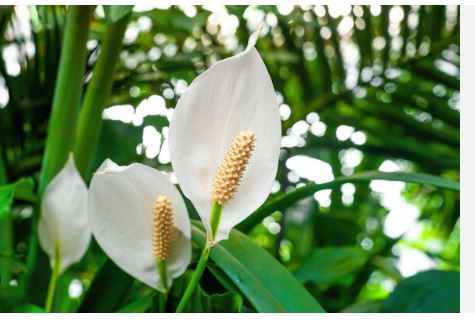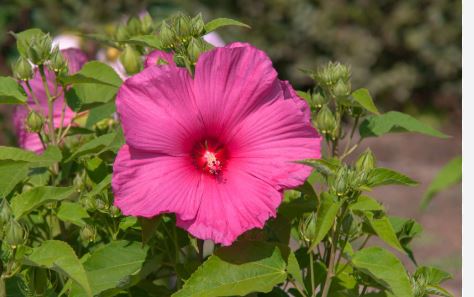
Flowers with exactly one petal are exceptionally rare, as most blooms have multiple petals, tepals, or none. In some cases, what appears as a single petal is a modified structure, like a spathe or sepal, surrounding tiny flowers or fused reproductive parts. These blooms, often in vibrant colors like red or white, paired with green foliage, add unique charm to tropical or indoor gardens, typically in USDA zones 9–11.
These plants often thrive in full sun to partial shade, preferring well-drained, fertile soil or moist conditions. Their growth ranges from sprawling shrubs to tall trees, suitable for ornamental landscapes or indoor settings. Some require warm, humid climates, while others adapt to drier soils, needing careful cultivation due to their rarity.
Blooming primarily in spring or summer, their single-petal-like structures attract pollinators like bees or butterflies, though some are less fertile due to modified anatomy. Certain species offer edible or medicinal parts, enhancing their value, while others are prized for timber or aesthetic appeal in shaded or tropical settings.
Many of these plants are slow-growing or scarce, requiring conservation to prevent overharvesting. Some can become invasive in favorable conditions, needing management to balance their spread. Their unique floral structure makes them focal points in gardens, offering a striking contrast to multi-petaled blooms.
Ecologically, these flowers contribute to biodiversity, supporting pollinators and adding structural diversity. Their adaptability to indoor or shaded environments suits urban spaces, while their rarity enhances their appeal for collectors. With proper care, they provide lasting beauty and functional benefits in specialized landscapes.

Flowers With a Single Petal
Peace Lily
Peace lily features a single, white, petal-like spathe surrounding a central spike of small flowers, with glossy, dark green leaves. Native to Central America, it thrives in low to partial shade and well-drained, fertile soil (USDA zones 11–12 indoors; 10–11 outdoors). Blooming year-round, it attracts minimal pollinators but is prized for air purification, perfect for indoor settings, requiring consistent moisture but avoiding soggy soil.
Mai Makhaa
This tropical tree produces a single, burgundy-red petal with four green sepals, forming a small, unique flower on woody branches with glossy green leaves. Native to Southeast Asia, it thrives in full sun and well-drained, fertile soil (zones 10–11). Blooming in spring, it attracts bees and is valued for its durable wood, but its rarity requires conservation efforts.
Afzelia quanzensis (Pod Mahogany)
This related species bears a single, reddish petal with green sepals, similar to mai makhaa, on tall trees with pinnate green leaves. Native to East Africa, it grows in full sun and sandy, well-drained soil (zones 9–11). Blooming spring, it attracts pollinators and is used for timber, needing ample space and warm climates for growth.
Afzelia africana (African Mahogany)
African mahogany produces a single, deep red petal with four sepals on large trees with dark green, compound leaves. Native to West Africa, it thrives in full sun and moist, well-drained soil (zones 10–11). Blooming in spring, it attracts insects and is harvested for wood, requiring protection from overharvesting in shaded gardens.
Afzelia bella
This lesser-known Afzelia species has a single, pinkish-red petal with green sepals, paired with shiny green foliage. Native to Central Africa, it grows in partial shade and rich, moist soil (zones 10–11). Blooming spring, it attracts bees and suits tropical gardens, but its slow growth demands patience and consistent moisture.
Afzelia bipindensis
This tropical tree bears a single, crimson petal with four sepals and broad, green leaves. Native to Central Africa, it thrives in full sun to partial shade and well-drained soil (zones 10–11). Blooming spring, it attracts pollinators and is valued for timber, needing large spaces and warm, humid conditions.
Bauhinia monandra (Orchid Tree)
This related Fabaceae species produces a single, pink petal-like structure (with reduced others) resembling an orchid, with heart-shaped green leaves. Native to Southeast Asia, it grows in full sun and well-drained soil (zones 9–11). Blooming spring to summer, it attracts butterflies and adds tropical flair, requiring pruning for shape.
Bauhinia galpinii (Red Orchid Bush)
Red orchid bush has a single, dominant red petal-like structure with minor petals, on sprawling shrubs with lobed green leaves. Native to South Africa, it thrives in full sun and sandy soil (zones 9–11). Blooming summer, it attracts bees and is drought-tolerant, ideal for xeriscaping, but needs frost protection.
Amherstia nobilis (Pride of Burma)
This rare Fabaceae tree bears a single, vibrant red petal with small sepals, on branches with fern-like green leaves. Native to Myanmar, it grows in partial shade and rich, moist soil (zones 10–11). Blooming spring, it attracts pollinators and is highly ornamental, but its scarcity requires careful cultivation.